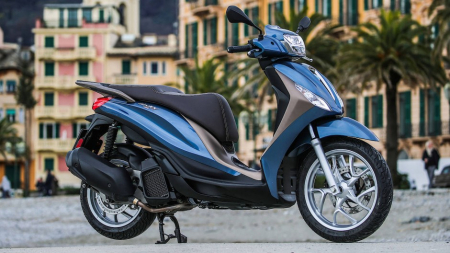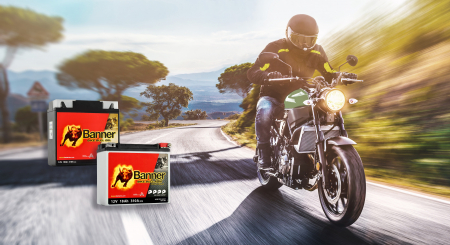START-STOP TECHNOLOGY FOR TWO-WHEELERS
THIS IS HOW THE FUEL-SAVING TECHNOLOGY IN THE SCOOTER WORKS!
Driving pleasure on two wheels increasingly meets automatic start-stop.
Many automotive technologies are now being used more and more often in motorbikes and scooters!
The global sales volume for motorbikes, mopeds and scooters is expected to reach around 75 million units by 2025. Demand for motorised two-wheelers will continue to increase due to the market introduction of attractive, fuel-efficient models with, for example, start-stop functions. New government directives to reduce fuel consumption and CO2 emissions also support developments in this direction. Especially for motor scooters (from year of construction 2016/17), often used in urban areas, many two-wheeler manufacturers are increasingly focusing on start-stop technology!

How does start-stop technology work in the two-wheeler sector and with what potential savings?
All systems on the market have eliminated the conventional starter and replaced it with a brushless starter generator (starter and alternator are one component), practically an e-motor - usually mounted directly on the crankshaft.
Resulting advantages:
+smooth starting
+less weight
+much higher safety and reliability
+lower fuel consumption (approx. 6-10 % according to the manufacturer) and therefore
+further reduced CO2 emissions
The start-stop function is becoming more and more of an issue in the two-wheeler sector, especially in the scooter segment.
In terms of battery technology, a much higher vibration and cycle resistance is required, combined with absolute leakage safety, depending on the area of application!
A start-stop automatic switches the engine off automatically a few seconds (usually 3-7 sec.) after the scooter has stopped (depending on whether the engine has reached its correct operating temperature or not). A small twist of the throttle is enough to start the engine absolutely quietly, as there is no conventional starter. If the side stand is folded out or the tilt sensor is activated, the control unit switches off the start-stop function, the engine switches off and does not restart automatically. Often the start-stop system can also be deactivated via a switch, if necessary, in exceptional cases.
The start-stop system is available as required as a ready-to-install module for new models or in some cases even as a retrofit component for existing two-wheelers!

In the start-stop two-wheeler sector, the following three battery technologies are basically used, depending on the energy requirement and the required vibration or cycle resistance.
+Bike Bull AGM - high energy demand, high vibration and cycle resistance.
+Bike Bull GEL - high energy demand, high vibration resistance and highest cycle stability
+Bike Bull AGM PRO - highest energy demand, highest vibration and cycling resistance
PS: Hybridisation hardly plays a role in the motorbike sector yet, the further savings potential is assessed by experts as very low "and there is hardly any pressure for further savings". A hybrid could become interesting in the future to increase performance, for example as a "booster" when starting and overtaking.
AGM (Absorbent Glass Mat): the acid is absorbed into the glass fleece and thus bound.
GEL: the electrolyte is gelled and thus fixed.
AGM PRO: PROfessional AGM Power for highest demands
More articles on this topic

